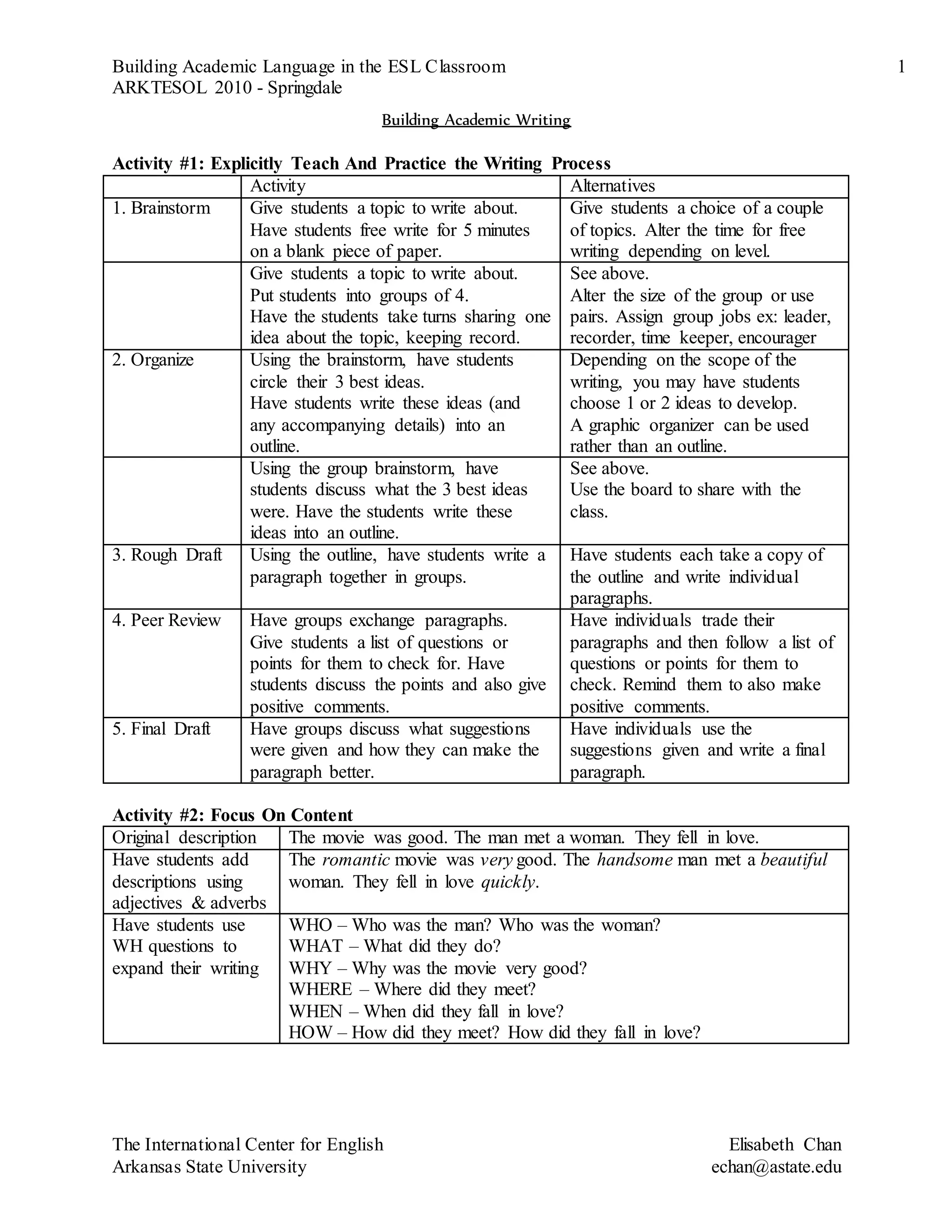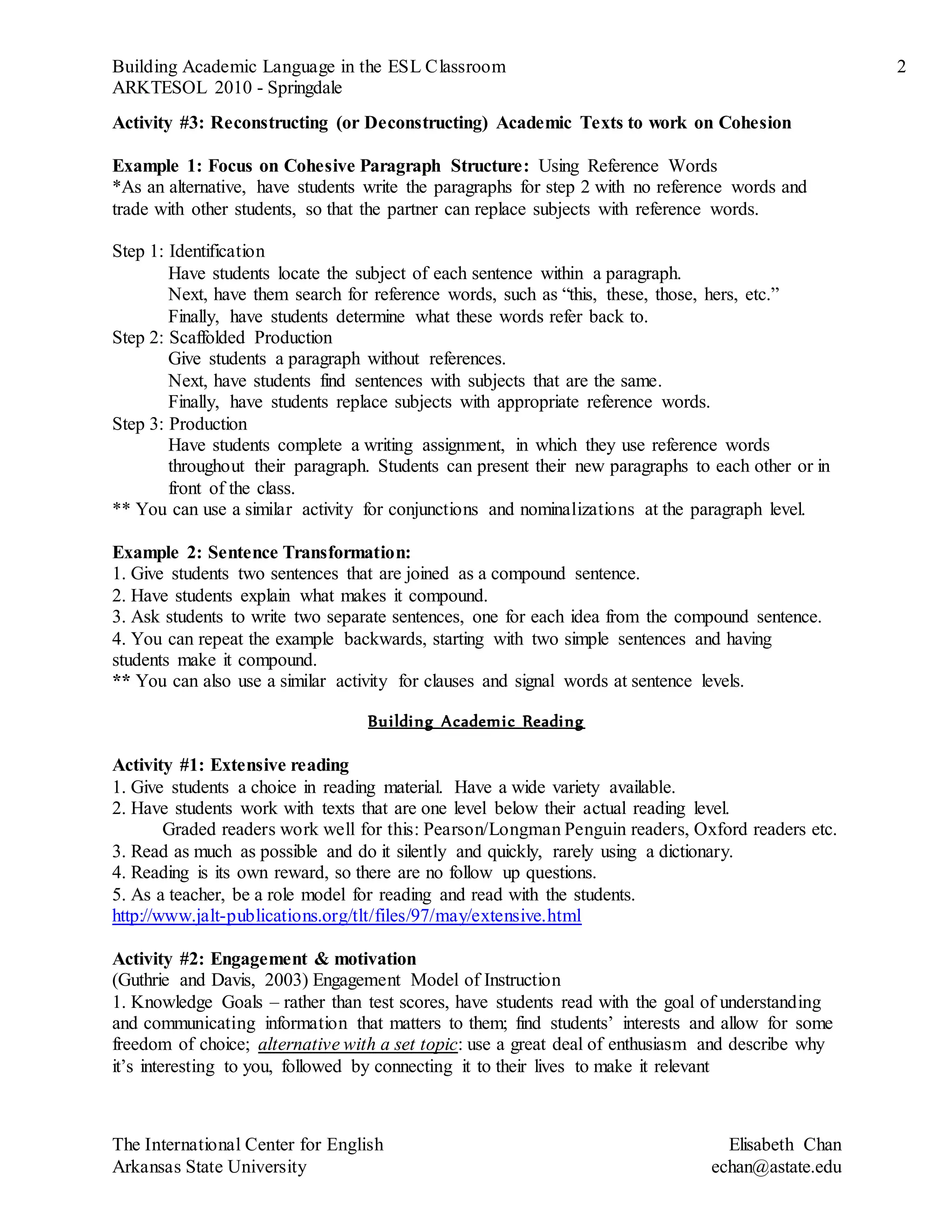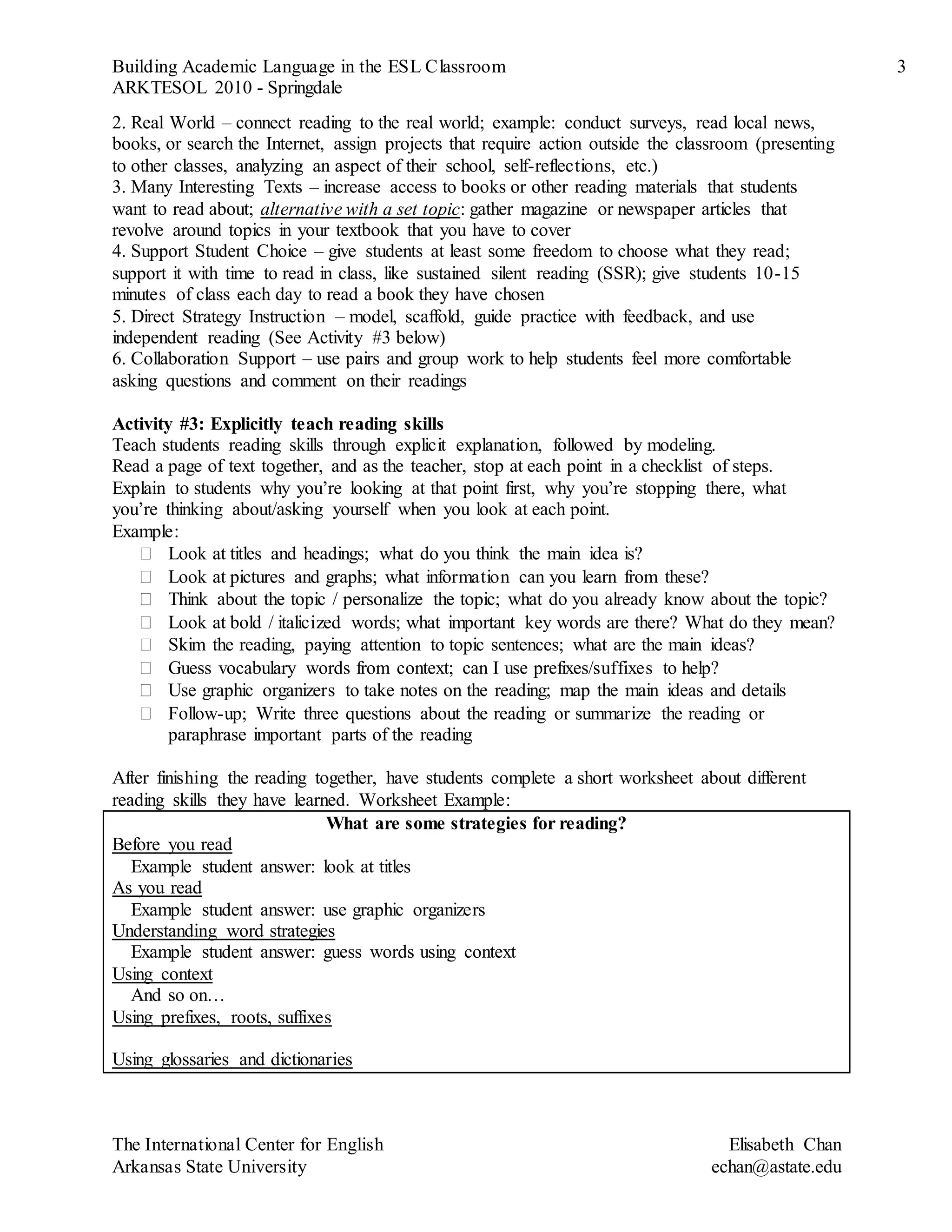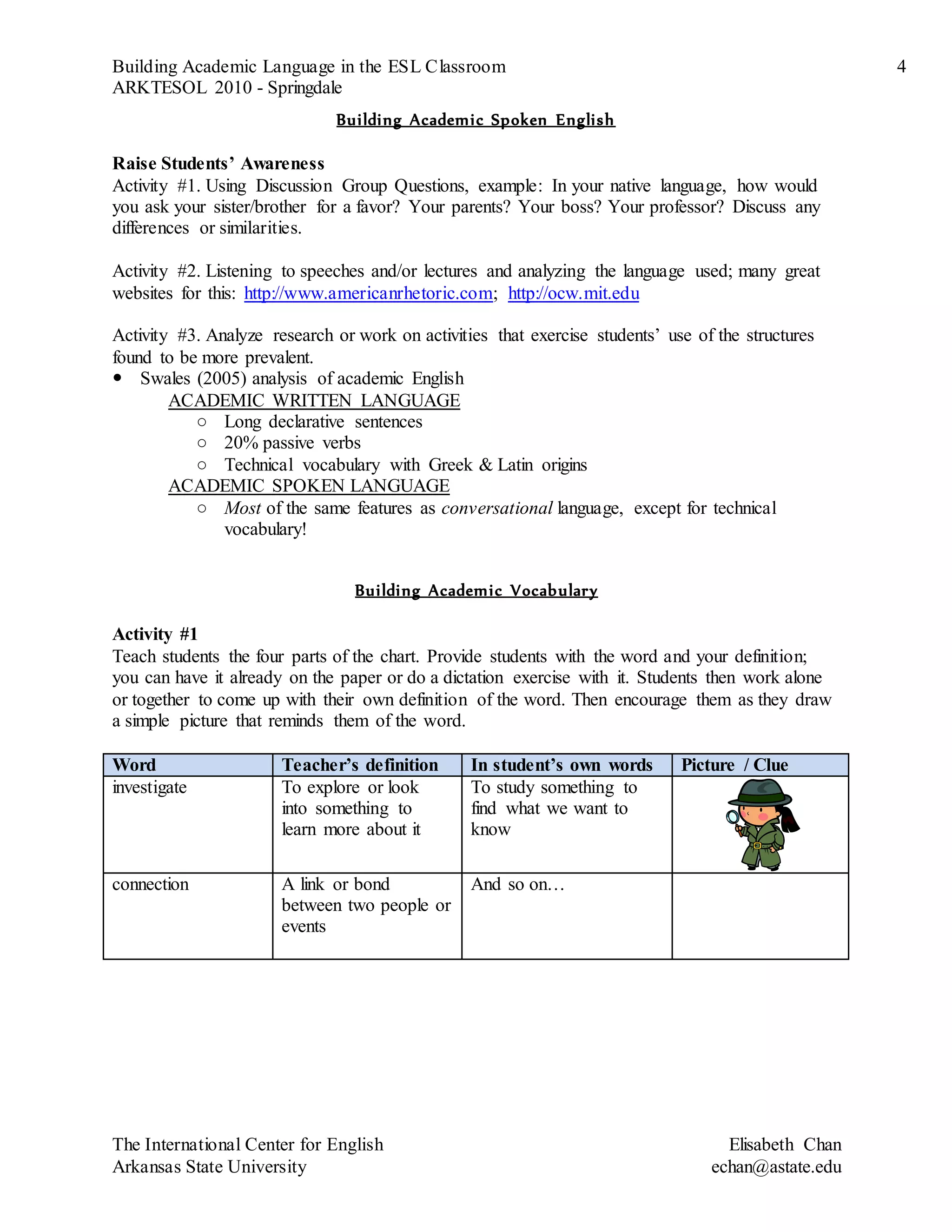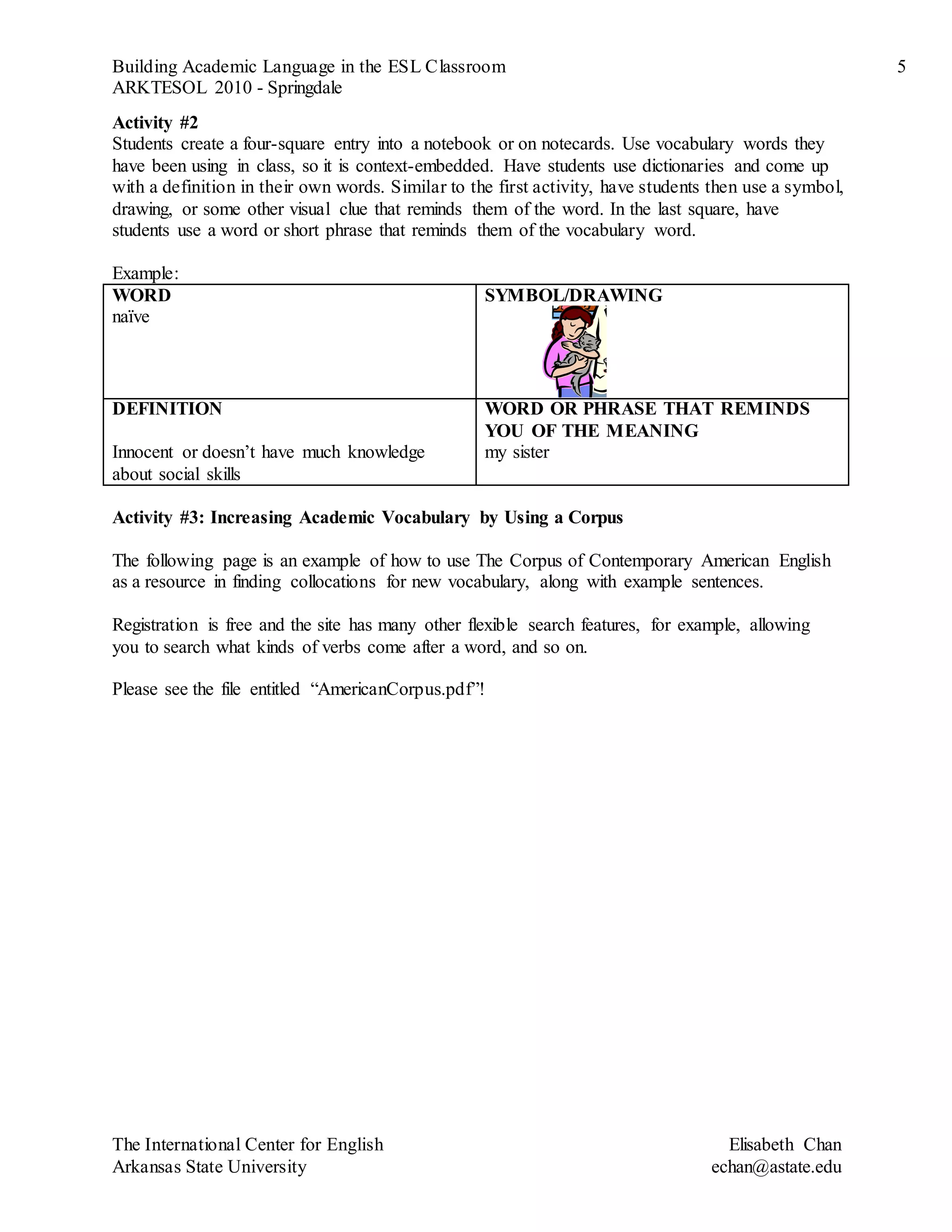This document provides examples of activities to build students' academic English skills, including writing, reading, speaking, and vocabulary. For writing, it suggests explicitly teaching the writing process, focusing on content by having students add details, and reconstructing texts to work on cohesion. For reading, it recommends extensive reading, engaging students through real-world connections, and explicitly teaching reading strategies. For speaking, it discusses raising awareness of academic spoken English. And for vocabulary, it offers ideas like teaching the four parts of a word chart and having students create four-square entries to learn and remember new words.
